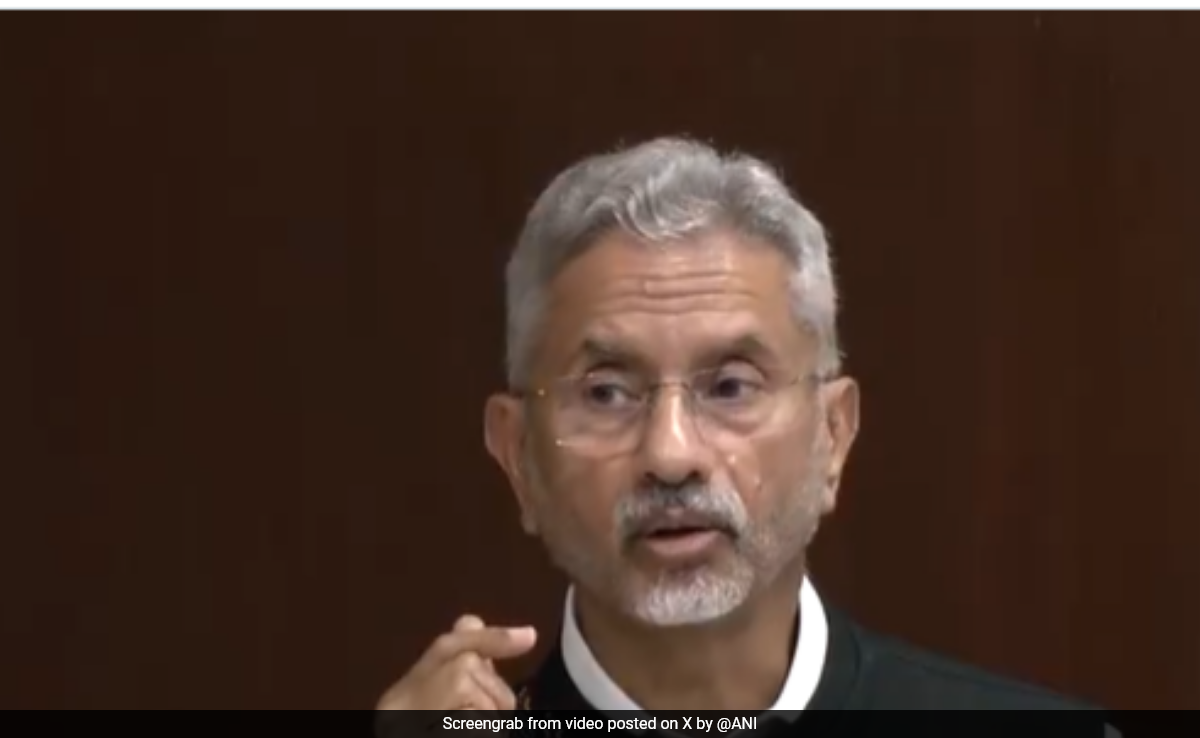
The Army Chief said that moving from indigenization to empowerment is a work in progress.
New Delhi:
Chief of Army Staff General Manoj Pande said at the first-ever NDTV Defense Summit that the emergence of disruptive technologies is changing modern warfare and weakening conventional combat effectiveness, which is an indicator of military strength and superiority among countries, emphasizing that Some challenges in modern warfare.
Whether it was the use of tanks in World War I or the development of supersonic fighter jets after World War II, “disruptive technologies” changed the status quo between factions.
At the summit, General Pande focused on the national security challenges posed by non-state actors acquiring such technologies and said information, cyber and space warfare have been incorporated into the realm of conflict. The Army chief said adversaries could launch a low-threshold conflict if they had access to such technology.
Former U.S. Deputy National Security Advisor, Nadia Shadlow said: “The space between war and peace is not empty but is a landscape fraught with political, economic and security competition that requires sustained attention.”
-“Disruptive Technology”-
The democratization of technology has led to the easy availability of artificial intelligence that can be used in targeted attacks. The use of artificial intelligence-powered semi-autonomous and autonomous drones in the Russia-Ukraine war and Red Sea attacks has forced countries to change their strategies. The U.S.-led Gulf coalition is tracking the attacks but has not yet nipped them in the bud.
Drones can perform missions at low cost and reduce asymmetry. The United States and Britain are equipping Ukraine with artificial intelligence drones for precision strikes. Ukraine’s domestic drone production has increased significantly since the outbreak of war in 2022, with demand spawning a vast war laboratory and the country producing more drones than it can procure. The UK has increased funding by £125 million and will supply more than 10,000 drones to Ukraine. Houthi rebels, backed by Yemen, use autonomous platforms to target ships in the Gulf.

Defense expert Sameer Joshi said at the summit: “The use of drones shows a shift in theory and robots will play an important role. There will be 10-15% robots in the future force.”
Off-the-shelf disruptive technologies help traditionally weaker nations fight cost-effectively and sustainably using methods to stay on the battlefield longer. Israel’s Iron Dome air defense system uses artificial intelligence to intercept incoming rockets. Israel’s attack on the Palestinians in 2021 has been called the first “artificial intelligence war” after Israel used artificial intelligence tools such as “Gospel”, “Alchemist” and “Wisodm Depth” to carry out precision strikes against targets in Gaza.
Cyberattacks on national infrastructure via malware have been a challenge for years. The malware attack on AIIMS Delhi servers is one such example. The attack was carried out by the Chinese and the FIR detailed that the attack came from China. Out of 100 servers (40 physical servers and 60 virtual servers), 5 physical servers were successfully penetrated by hackers.
Recently, healthcare providers in the United States struggled to make payments after suffering a ransomware attack that reportedly originated from Russia. The Colonial Pipeline’s attack on U.S. oil infrastructure was the worst in history. According to reports, a Russian organization called “DarkSide” was responsible.
One of the key elements of India’s new penal code is the inclusion of “threat to economic security” in the definition of “terrorist act”.
Even Indian Prime Minister Narendra Modi has expressed concerns about Deep Fakes. It is used in information warfare to generate fake news, especially during crises. In a battle to psychologically dominate belligerents, information warfare is as important as firepower.
Last November, US President Joe Biden signed an executive order outlining security measures for artificial intelligence. White House deputy chief of staff Bruce Reed said Biden’s interest in artificial intelligence was sparked in part after watching the video. Mission: Impossible – Dead Reckoning Part One.
“This comes amid the continuation of outstanding legacy challenges along the borders,” the Army chief said at the summit – an indirect reference to issues with China and Pakistan.
– “China’s Three War Strategy” –
In 2003, the Central Committee of the Communist Party of China and the Central Military Commission approved the “Three Major Operations Strategies” to guide the People’s Liberation Army’s political operations and information operations. The three elements of this strategy are public opinion, information and legal warfare.

Using the Ladakh border conflict as a reference, China uses legacy claims such as the 1962 reference line and the 1959 Ladakh claim to justify its aggressive military posture. The dissemination of videos related to the Galwan conflict and other flashpoint confrontations on social media is being used to fight information warfare. Some of the tactics used were to guide public opinion among citizens that this was our “lost land” and that we had “sovereignty” over it.US worries about China’s behavior during Donald Trump’s presidency “Military-Civil Integration” Develop dual-use technologies.
Such tactics, use of destructive technology and subterfuge blur the lines between peace and war and create gray zone conflicts for adversaries, an issue General Pande highlighted in his speech.
-“Indigenization to Empowerment”-
The Army Chief stressed the need for indigenous development of key technologies to create a domestic ecosystem and reduce dependence on foreign players. “We are working on a three-service project to develop a high-performance computing artificial intelligence cloud and develop a roadmap,” Gen. Pande said, adding that we are looking at 45 niche technologies and 120 military-impact technologies. Local projects.
“Swadeshikaran (indigenization) se Sashakstikaran (empowerment) is a work in progress to prepare for the future,” he said.
At Innovation for Excellence in Defense (IDEX), Defense Minister Rajnath Singh launched the ADITI initiative to accelerate innovation in critical and strategic deep technologies for future warfare. It provides financial subsidies to private companies and creates public-private partnership models to develop future technologies.
wait reply load…
Follow us on Google news ,Twitter , and Join Whatsapp Group of thelocalreport.in
















